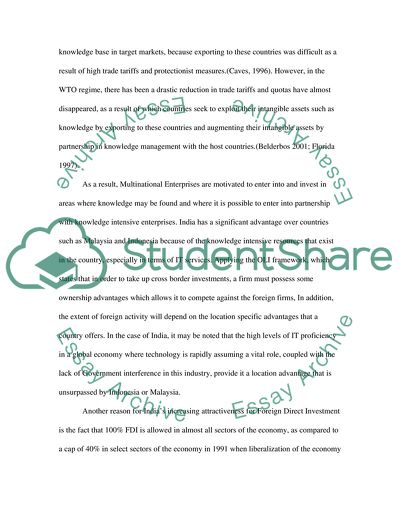Cite this document
(Foreign Direct Investment in India Report Example | Topics and Well Written Essays - 3000 words, n.d.)
Foreign Direct Investment in India Report Example | Topics and Well Written Essays - 3000 words. https://studentshare.org/macro-microeconomics/1710894-india-is-now-more-attractive-for-fdi-by-multi-national-firms-than-south-east-asian-countries-such-as-malaysia-and-indonesia
Foreign Direct Investment in India Report Example | Topics and Well Written Essays - 3000 words. https://studentshare.org/macro-microeconomics/1710894-india-is-now-more-attractive-for-fdi-by-multi-national-firms-than-south-east-asian-countries-such-as-malaysia-and-indonesia
(Foreign Direct Investment in India Report Example | Topics and Well Written Essays - 3000 Words)
Foreign Direct Investment in India Report Example | Topics and Well Written Essays - 3000 Words. https://studentshare.org/macro-microeconomics/1710894-india-is-now-more-attractive-for-fdi-by-multi-national-firms-than-south-east-asian-countries-such-as-malaysia-and-indonesia.
Foreign Direct Investment in India Report Example | Topics and Well Written Essays - 3000 Words. https://studentshare.org/macro-microeconomics/1710894-india-is-now-more-attractive-for-fdi-by-multi-national-firms-than-south-east-asian-countries-such-as-malaysia-and-indonesia.
“Foreign Direct Investment in India Report Example | Topics and Well Written Essays - 3000 Words”. https://studentshare.org/macro-microeconomics/1710894-india-is-now-more-attractive-for-fdi-by-multi-national-firms-than-south-east-asian-countries-such-as-malaysia-and-indonesia.


